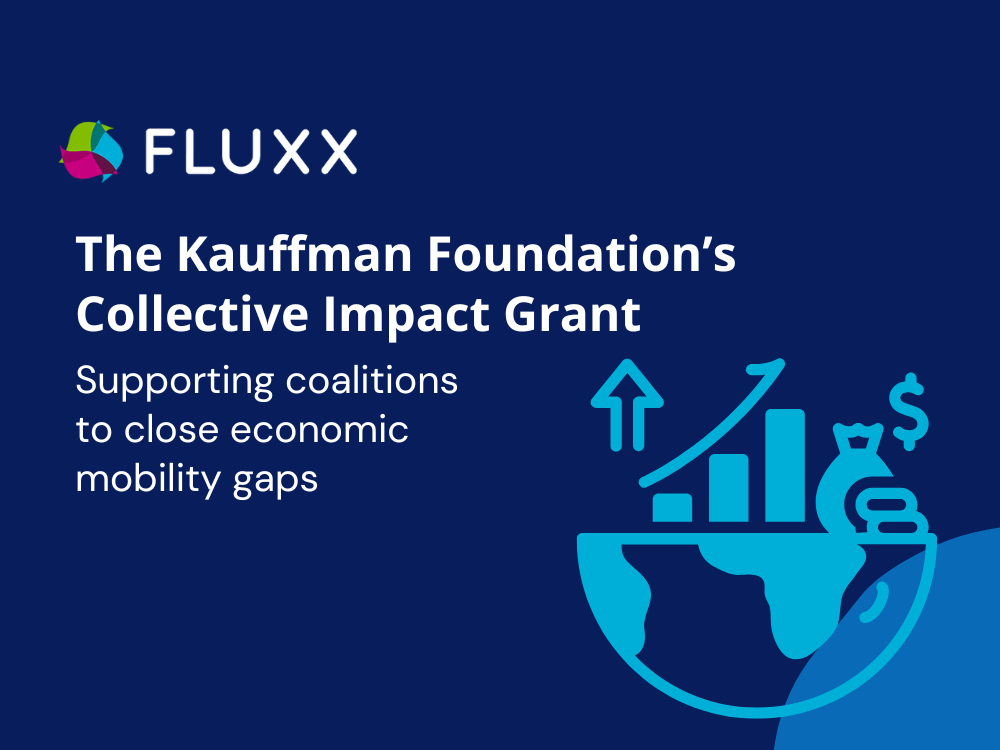Building a Green Future: Inside Joyce Foundation’s Environment Program
Dive into how the Joyce Foundation advances equitable climate and water policy across the Great Lakes region, who’s eligible, and how to apply.
| CARVIEW |
Be the first to know about new Fluxx grants management resources, blog articles and podcasts.


Economic mobility is not set up overnight. It is established over a period of time with collaborative, strategic, inclusive action, especially in communities with entrenched inequities. That is why the Ewing Marion Kauffman Foundation began its Collective Impact Grant in an attempt to support groups of high-capacity organizations in the Kansas City region. As a two-step process, you plan and you act, it is designed to catalyze systems-wide solutions filling economic mobility gaps with education, equal access, and links with employers.
Here is a detailed examination of how this aggressive funding model is pushing Kauffman's 2035 mission forward and how coalitions can position themselves to benefit.
The Kauffman Foundation's grantmaking adjustment is an exercise in profound listening and strategic refinement. Consultations with grantees, civic leaders, and communities informed an ambitious 2035 plan: make greater Kansas City a national model for economic mobility for everyone.
Centered on three strategic objectives: college access and completion, workforce and career development, and entrepreneurship, this vision creates grant avenues for transformative, sustainable change.
Collective Impact is at the heart of this method: rather than invest in isolated projects, the Foundation now invests in multi-stakeholder coalitions that create systems change at scale.
Planning Grants
Implementation Grants
The whole cycle, first planning, then action, assures coalitions not only are financed but are enhanced in capacity and direction in order to effect meaningful change.
The Foundation pays for a coalition but only one intermediary organization submits an application. The organization:
Coalitions will have to develop strategies in alignment with Kauffman’s priorities, especially education + employer connections and equitable access, and engage community members in design and implementation in substantial ways.
Successful first-round grantees (the 66 coalitions that competed were funded in six) share a set of focus areas including entrepreneurship education, alignment with the workforce system, use of technology, and access.
As in the 2025–2026 cycle:
|
Grant Stage |
Amount |
Timing / Notes |
|
Planning Grants |
$500,000 or less |
Next application foreseen Summer 2026 |
|
Implementation Grants |
$5M–$20M, multi-year |
By invitation only, anticipated early 2027 |
The Foundation also continues to make its Capacity Building, Project, and Research grants available on its standard cycles.
As opposed to disconnected interventions, this model addresses system-wide causes in multiple sectors related to interconnecting training jobs ecosystems.
The intermediary is an organizational cornerstone, connecting coordination of strategy, shared measurement, and alliance alignment, all necessary components of Collective Impact theory.
Kauffman’s priorities specifically include equitable access and employer connection, signaling inclusive economic development.
The Foundation's new strategy was directed by hundreds of community and civic stakeholders, which brought local knowledge and credibility.
The Collective Impact framework mentions five pillars:
Kauffman's model falls into this mold by requiring a backbone intermediary, common vision, buy-in amongst a community, results which are measurable, and collaboration amongst sectors.
Yet reflection in practice warns: equity is not somehow inserted, it requires active inclusion. Coalitions can make inclusive leadership and sharing of power in the model a prime consideration.
Some of those early Collective Impact planning grantees include:
These coalitions showcase initiative breadth across tech, education, returning citizens, entrepreneurship, and equity.
By doing so, the Kauffman Foundation is not just giving, it is leading by example what effective 21st-century philanthropy needs to do. By asking coalitions to rethink systems, resource mobilization, and measurement, Kauffman is:
For Kansas City-area leaders whose organizations are in a position of capacity and foresight for thinking about system-wide change, the Collective Impact Grant is an enabling agent with credibility behind it. Organize around Kauffman’s mission, develop your backbone, and put equity and community at the core of what you do.
Learn about the Collective Impact Grant and prepare for the 2026 cycle on the Kauffman Foundation's Grantmaking page.
Dive into how the Joyce Foundation advances equitable climate and water policy across the Great Lakes region, who’s eligible, and how to apply.
Explore how the Google Foundation advances STEM education, digital skills, and community empowerment to create a more inclusive innovation economy.
Through its Strong Local Economies program, the New York City-based Surdna Foundation supports the development of a robust and sustainable economy.
Be the first to know about new Fluxx grants management resources, blog articles and podcasts.
